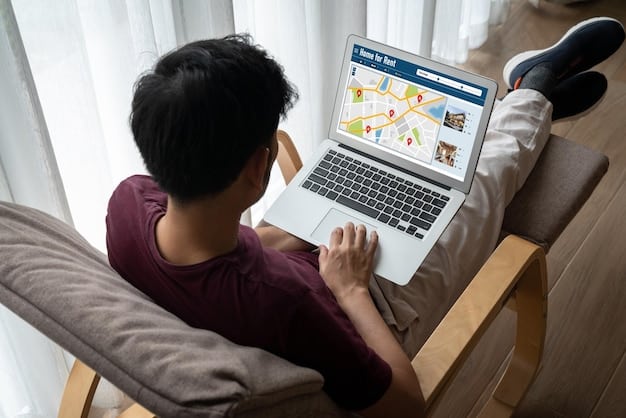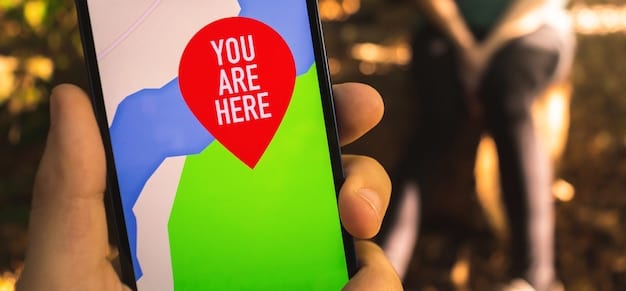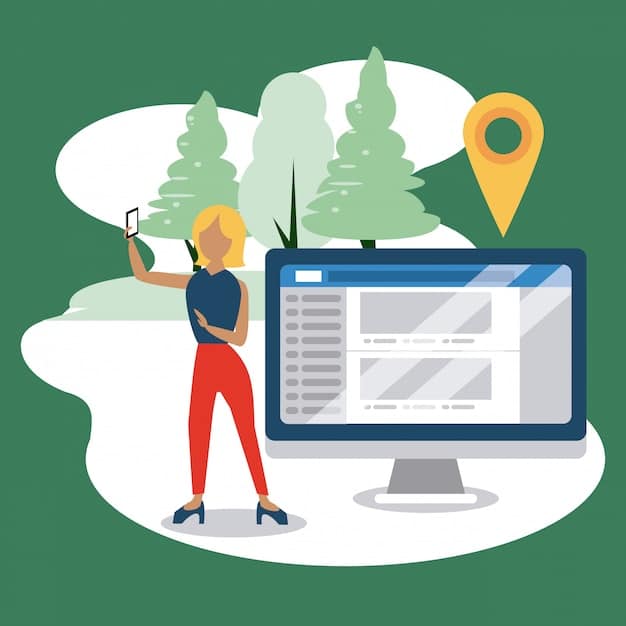How to Find Your Lost Android Phone Using Google’s Find My Device

Google’s Find My Device is a free and easy-to-use service that helps you locate your lost Android phone, lock it remotely, and even erase its data, ensuring your personal information remains secure.
Losing your Android phone can be a stressful experience. Fortunately, Google offers a free and effective service called Find My Device that can help you locate, lock, or even erase your phone remotely.
Understanding Google’s Find My Device
Google’s Find My Device is a powerful tool that can be a lifesaver when you misplace your Android phone. It’s designed to help you protect your data and potentially recover your device.
What is Find My Device?
Find My Device is a Google service that allows you to track, remotely lock, and erase the data on your Android phone if it’s lost or stolen. think of it as a digital safety net for your device.
How Does It Work?
Find My Device uses your phone’s GPS, Wi-Fi, and mobile data to pinpoint its location. This information is then displayed on a map in the Find My Device interface, accessible through a web browser or the Find My Device app.

Here are key aspects of how Find My Device functions:
- Location Tracking: Uses GPS, Wi-Fi, and mobile data to locate your device.
- Remote Lock: Allows you to lock your phone with a new password or PIN.
- Erase Data: Grants the ability to remotely wipe all data from your phone.
- Play Sound: Makes your phone ring at full volume, even if it’s on silent.
Find My Device offers a suite of features designed to give you control over your lost device, even when it’s out of your reach.
Setting Up Find My Device on Your Android Phone
Before you can use Find My Device to locate a lost phone, you need to make sure it’s properly set up and enabled on your Android device. This process is straightforward.
Enable Location Services
Find My Device relies on location services to pinpoint your phone’s whereabouts. Ensure that location services are enabled on your phone.
Activate Find My Device
Find My Device is usually enabled by default on most Android phones, but it’s good to double-check. You can usually find it in your Google settings.
Here’s how to activate Find My Device:
- Go to your phone’s Settings app.
- Tap on “Google” and then “Find My Device.”
- Make sure the “Find My Device” toggle is turned on.
- Also, ensure “Send last known location” is enabled to help locate your device even if the battery is low.
By following these simple steps, you’ll ensure that Find My Device is ready to assist you if your phone ever goes missing.

Locating Your Lost Phone Using Find My Device
Once Find My Device is set up, you can use it to locate your lost phone via a web browser or the Find My Device app on another Android device. The process is simple and intuitive.
Using the Web Browser
You can access Find My Device through any web browser on a computer or another mobile device. Simply go to the Find My Device website and sign in with your Google account.
Using the Find My Device App
If you have another Android device, you can download the Find My Device app from the Google Play Store. Sign in with your Google account to access the same features as the web browser version.
Here’s what you’ll see when you use Find My Device:
- A map displaying the approximate location of your phone.
- Options to play a sound, secure the device, or erase the device.
Find My Device provides a clear and easy-to-use interface that can help you quickly locate your lost phone and take action to protect your data.
Taking Action: Play Sound, Secure Device, and Erase
Find My Device offers several actions you can take once you’ve located your phone, or if you can’t find it but want to protect your data. These actions include playing a sound, securing the device, and erasing its data.
Play Sound
The “Play Sound” option makes your phone ring at full volume for five minutes, even if it’s set to silent. This can be useful if you’ve misplaced your phone nearby.
Secure Device
The “Secure Device” option allows you to lock your phone with a new password or PIN, and display a message on the lock screen with contact information. This can prevent unauthorized access to your data.
Erase Device
The “Erase Device” option remotely wipes all data from your phone, restoring it to factory settings. This is a last resort option if you’re certain you won’t be able to recover your phone.
These actions provide a comprehensive set of tools to help you protect your data and potentially recover your lost phone.
Troubleshooting Common Find My Device Issues
While Find My Device is generally reliable, you may encounter some common issues that can prevent it from working effectively. Here are some troubleshooting tips to help you resolve these problems.
Phone is Offline
If your phone is turned off or doesn’t have an internet connection, Find My Device won’t be able to locate it in real time. In this case, you can only see its last known location.
Location Services are Disabled
Find My Device requires location services to be enabled on your phone. If location services are turned off, Find My Device won’t be able to pinpoint your phone’s location.
Google Account Issues
Make sure you’re signed in to the correct Google account on both your phone and the Find My Device interface. If you’re using a different account, you won’t be able to locate your phone.
Addressing these common issues can help ensure that Find My Device works effectively when you need it most.
Alternative Methods for Finding Your Lost Phone
While Find My Device is a great tool, it’s not the only option for locating a lost phone. Here are some alternative methods you can try.
Carrier Services
Some mobile carriers offer their own phone tracking services. Check with your carrier to see if they provide this feature.
Third-Party Apps
There are several third-party apps available that offer phone tracking and security features. These apps can provide additional functionality, such as remote camera access and geofencing.
Contacting Local Authorities
If you suspect your phone has been stolen, you can contact local law enforcement and provide them with your phone’s IMEI number. They may be able to track your phone using this information.
Exploring these alternative methods can increase your chances of recovering your lost phone, especially if Find My Device isn’t working.
| Key Point | Brief Description |
|---|---|
| 📍 Enable Location Services | Ensure location services are activated on your device for accurate tracking. |
| 📱 Secure Device Remotely | Lock your lost phone and display a message with your contact details. |
| 🎶 Play Sound Feature | Use Find My Device to make your phone ring loudly, even when on silent mode. |
| 🗑️ Erase Data as Last Resort | Remotely wipe all data from your phone if recovery is unlikely to protect your privacy. |
Frequently Asked Questions (FAQ)
▼
Yes, Google’s Find My Device is a free service for all Android users. It comes pre-installed on most Android devices and can be accessed via the web or the app.
▼
If your phone is off, Find My Device can only show the last known location before it was turned off. It won’t be able to track the phone in real-time.
▼
Find My Device works on most Android phones running Android 4.1 (Jelly Bean) and above, as long as you have a Google account and location services enabled.
▼
The accuracy of Find My Device depends on several factors, including the availability of GPS, Wi-Fi, and mobile data. Generally, it’s accurate within a few meters in urban areas.
▼
Erasing your phone remotely is a secure way to protect your data if you can’t recover your device. However, once you erase your phone, you won’t be able to track it anymore.
Conclusion
Find My Device is an invaluable tool for any Android user. By understanding how to set it up, use its features, and troubleshoot common issues, you can significantly increase your chances of recovering a lost phone and protecting your personal information.





